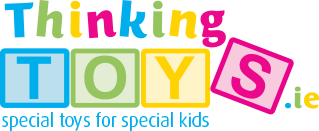Purchase Now
Supporting Gross Motor in Schools

Gross motor skills are essential for helping children move confidently and safely through their world. In a school setting, these skills are critical for participation in physical education, classroom routines, and playtime. At Thinking Toys, we offer a wide range of resources designed to support each element of gross motor planning.
Here's what schools should consider-and how you can enhance development in each area using carefully selected products.

BODY AWARENESS
Body awareness helps children understand where their bodies are in space and how to move them with purpose and precision. In the classroom or yard, it supports activities like lining up, navigating busy spaces, and participating in sports.
Recommended Thinking Toys Products:
- Fun Decks: Focused on body scheme, spatial awareness, and movement.
- Movement Ribbons: Useful for following movement patterns and building awareness.
Activities for Schools:
- Daily movement breaks using music and scarves.
- "Simon Says" or copycat games in PE or sensory circuits.
PROPRIOCEPTION (Located in Muscles and Joints)
Proprioception gives children feedback from their muscles and joints about force and movement. In the classroom, it supports regulated body use - such as sitting upright or knowing how hard to push a door or squeeze a pencil.
Recommended Thinking Toys Products:
- Peanut Physio Roll - Designed to improve balance, core strength, and can also be beneficial for those with attention or movement needs.
- Weighted Lap Pads – Offer calming proprioceptive input for seated tasks.
- Pushing/Carrying Toys (e.g. Tactile Rollers, Scooter Boards) – Ideal for active corridors or OT rooms. Carrying/giving out workbooks in the classroom provide a quick movement/load baring exercise that helps to refocus the child that needs it.
Integration Ideas:
- Incorporate “heavy work” stations in sensory breaks.
- Offer resistance-based movement during transitions. Think exercise bands and wall or chair push ups.
MOTOR PLANNING
This involves knowing how to move, what steps to take, and executing movements in a smooth logical manner. In schools, this is needed for playground activities, PE sequences, or tasks like tying shoelaces and getting dressed after swimming. This even be as simple a task as finding and removing the correct school book from their bag.
Recommended Thinking Toys Products:
-
Obstacle Course Kits: Encourage kids to crawl, climb, jump, hop and manoeuvre through spaces.
- Visual Cues: Add visual cues such as Educ'o'Disks to support those children who find motor planning challenging.
BALANCE
Balance underpins every gross motor skill. Children use it to sit in chairs, walk on uneven ground, and play confidently outdoors.
Recommended Thinking Toys Products:
- Balance Boards and Wobble Discs: Build core strength and postural control.
- Stepping Stones or Tactile Paths: Encourage balance in sensory paths.
- Seesaws or Rockers: Promote dynamic balance in a controlled setting.
In Practice:
- Include balance activities in morning regulation routines.
- Use tactile paths to keep children engaged and focused.
HAND-EYE COORDINATION
This skill connects vision and movement—essential for catching, throwing, and navigating space safely. It also supports later fine motor tasks such as handwriting and dressing skills.
Recommended Thinking Toys Products:
- Bean Bags & Target Games - Perfect for both indoor and outdoor use.
- Ball Catchers or Scoop Sets - Support cooperative and individual play.
- Swoosh Ball - One of Aine's favourites and a great price at 6 Euros it's a no brainer click here.
Browse our Gross Motor collection today at ThinkingToys to start building your sensory-motor toolkit!
